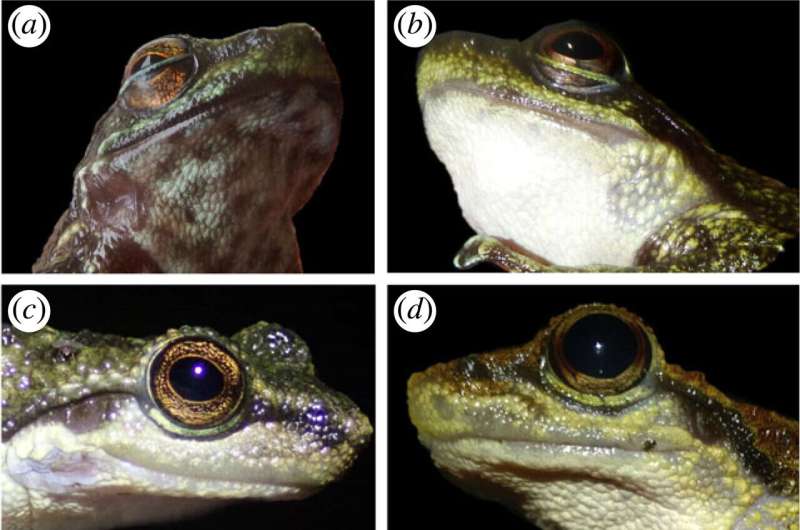January 11, 2024 report
This article has been reviewed according to Science X's editorial process and policies. Editors have highlighted the following attributes while ensuring the content's credibility:
fact-checked
peer-reviewed publication
trusted source
proofread
Gland-like tissue in saber-toothed frog lower jaw may be used for communication

A team of zoologists from the Leibniz Institute for Evolution and Biodiversity Science's Museum für Naturkunde, the University of Würzburg, both in Germany and ONG EnviSud Guinée, in Guinea, has found evidence that the gland-like tissue in the lower jaw of saber-toothed frogs may be used for communication. Their paper is published in Proceedings of the Royal Society B.
Saber-toothed frogs were first described in the science literature just a few years ago. At the time, researchers noted that there were five known species living in Sierra Leone, Liberia and Guinea. They also noted that in addition to having lower-jaw–based fangs, the frogs also had what was described as gland-like tissue inside their mouths that followed the contours of the lower jaw bone. At the time, researchers suspected that the tissue was likely a gland that made venom. In this new effort, the research team took a closer look at the tissue to learn more about it.
They found that the tissue does not connect with the fangs—it just comes close. After studying the chemical makeup of the tissue, they found that it could not be used to create venom. They also found differences in chemical makeup between males and females, between species, the time of the year, and whether the frog was sexually mature. They also noted that the skin covering the tissue was thin, suggesting chemicals could be released through it into the air. The tissue produced substances similar to those in pheromones used by some insects to attract a mate.
The research team says their work thus far is still in the preliminary stages. They next plan to determine if the tissue does constitute a gland, and if so, its purpose. They suspect that the frog uses the tissue as a means for communicating sexual messages, though they have not yet formulated any theories to explain how that might work. The team also notes that their findings thus far suggest that frog communication might be far more intricate than has been thought.
More information: Marvin Schäfer et al, Species- and sex-specific chemical composition from an internal gland-like tissue of an African frog family, Proceedings of the Royal Society B: Biological Sciences (2024). DOI: 10.1098/rspb.2023.1693
Journal information: Proceedings of the Royal Society B
© 2024 Science X Network


















